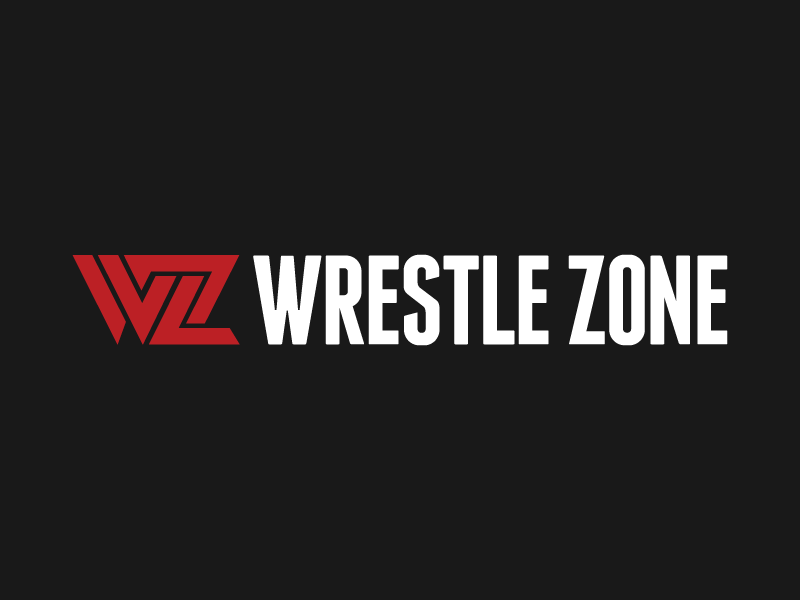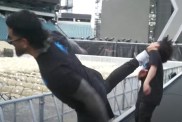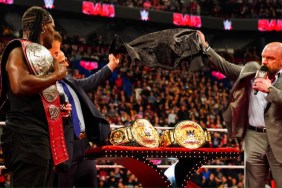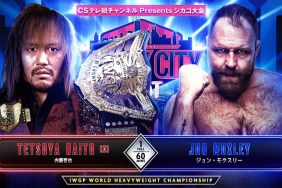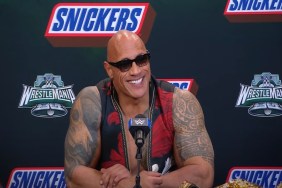Grey. The shade of our world. A hazy area of uncertainty, nothing perfectly fitting under one definition. Such is nature. Whilst reality is painted with a dull palette of greys, the artist, playwrights, and authors of the world have traditionally built narrative with black and white. Absolutes.
It has become so deeply embedded in basic literature and entertainment over the course of centuries, absolute characterization has come to be expected. The basic construction of a text has a clear-cut distinction between good and evil, who the audience is lead to admire and support, and who the audience a meant to despise and belittle. This basis for modern entertainment is evident everywhere, from pantomimes to opera to professional wrestling. Especially professional wrestling.
Part of the success of professional wrestling over decades has been it’s accessibility and appeal to all demographics. When children watch wrestling they see golden haired role models, heroes, real life superheroes defeating everything there is to be afraid of in the world. Adults see the struggle, the uphill fight against the seemingly immovable object, the eventually conquest, and the message of hope. Regardless of age, race, sex, or situation, everyone finds something about wrestling that appeals to him or her. The basis for each appealing aspect of professional wrestling, is rooted in the representation of black and white. Absolutes.
The absolutes of professional wrestling take shape in the form of heels and faces. Heels, the cookie cutter bad guy, no remorse, greedy, hedonistic, in general, possessing no characteristics to make him or her even the slight bit endearing to the audience, and thus easily distinguished from valiant face. The face is everything everyone wants to be. The hero. Honest, humble and human. Courageous in face of the enemy, always winning cleanly and fairly, making it impossible for the audience not to like them. This division is the foundation for any feud, match or character.
The face, good, the heel, evil, essentially, every character that steps into the ring slots neatly into one of the two pigeonholes, so talent is incredibly limited in its variety. Traditional face and heel behaviour has become so entrenched in the sport that certain interactions between the two have become expected in feuds, and such heel and face dynamics are vital to the construction of the storyline driven modern product.
The foremost interaction between the heel and face is competition in the ring. The maneuver repertoire of a face is drastically different from that of a heel. Faces utilize a clean audience participation style of wrestling, seldom seen with his or her feet on the ropes, holding the tights, or bringing a foreign object into the ring. If a foreign object is used by a face, it is generally because the heel brought it into the ring, or by accident. ‘Classic’ faces have an uninteresting portfolio of moves, all of which included for their emotional repercussions. For example, a string of clotheslines, a series of strike in the turnbuckle, or several suplexes in a row, all ignite the match with momentum, a tension which more often than will result in the climax of the match. The audience respond by cheering or by generally being vocal, giving them no choice but to side with the face.
The heel’s moves typically include choking, eye gouging, and any other illegal maneuver they feel they can get away with. The biggest technique a heel wrestler uses is the referee, the barrier between him winning or being disqualified. Nearly every match at one stage or another have the referee either being distracted, knocked out, or playing dumb, resulting in the heel getting the upper hand through a weapon or low blow. The audience respond to the sheer immorality and unsportsmanship of the heel, not allowing themselves to side with someone so unscrupulous, clearly defining heel from face without saying a word.
When combined, these two conflicting styles construct the basic skeleton of a professional wrestling match. Being binaries, the style of the heel is the exact opposite of the face’s style, which, when added together, becomes a complete wrestling match. If a face decided to do a series of random moves, the audience would find it difficult to ‘get into’ the match, because the face is the star that creates the momentum and the reason to watch. Similarly, if a heel were to neglect giving the audience a reason to berate him or her, then there would no sense of victory for the fans once the match had concluded, as nothing had been conquered or triumphed over. Although binary opposites, a match is dependent on the staple styles expected of both heel and face.
Promos have become a crucial element of contemporary wrestling, being the glue that binds matches together, as well as justifying their existence. Over recent years, the prominence of the ‘entertainment’ side of professional wrestling has emphasized the roles of the heel and face.
The face uses the microphone to convey to the fans that he is the one to be cheered; he is the one who they should rest their hopes on. There are various ways that this is done. The most blatant of all is patriotism, be it national, or local. An American flag, basketball jersey of the local team, or simply saying the name of the town in which he is in, are the most common ways of using patriotism to secure a star’s ‘faceness’. The other main mechanism a face uses to get over is the rescue tactic. The rescue tactic involves the face coming to the aid of a wrestler who is being group attacked in the ring, or more effectively, a diva being attacked by a group of wrestlers. The face usually cleans out the ring, this is popular because it does several things at once. It develops a story with the saved character and defeated heels, establishes the moral hero aura of the face while also cementing him as a true physical threat. All of which make up the traditional face stereotype.
The heel also has come to depend on promos to go further with their unappealing and evil persona. In essence, the heel does the exact opposite of the face, degrading hometowns and attacking innocent stars, however they have more tools at their disposal. Often a heel will sit at ringside or at the announce table, backchatting the announcers and staring at their would-be opponent spar with a third party. When an opportune moment arises the heel wrestler will then begin to attack the star he was ‘observing’, creating a feud in the process. The other chief technique is their overall attitude. Heels have come to be mainly cocky to the point of excessive egotism, in the process of stroking their ego, they degrade the audience. Also, heels are often wealthy characters. This means that the average audience member cannot relate to the character, while the cockiness reinforces the stereotype of the rich being gluttonous and immoral.
Once again, the styles of both the face and the heel out of the ring are starkly dissimilar. But this is the precise reason why they work. The contrast between each style is necessary for the other to come across successfully to the audience. The heel, by being so different to the face means that the face seems all that much more heroic and moral, and vice versa. If the heel were to be ‘sorta’ bad or ‘kinda’ bad, the face would not seem so excessively perfect, simply because the evil he is struggling against doesn’t seem so immovable by comparison. The over emphasis and stereotyping of the heel and face is essential for each to seem larger than life, and thus achieve their respective goals of favour or hate.
Title reigns are also affected by the binary opposite of face and heel. Titles won by faces, are won, on the whole, after a series of misadventures with their rival, caused by nagging underhanded tactics by the heel. Eventually winning after finally meeting his opponent in a clean situation. Once won though, few faces have a dominant title run uninterrupted. Faces tend to be more fighting champions, facing any challengers to the title, giving the impression that they earned their title and aren’t resting on their laurels. Because faces on average are underdog characters, their title reign must reflect this sentiment, so their adversaries are portrayed as having the upper hand, be it in numbers, size or simple deviousness..
For heels, title reigns are drawn out and build tension towards a climax. The long title reigns service to build the audience’s vendetta against the heel, by doing so, it keeps viewers on the edge of their seat, urging the next competitor to conclude the ill gotten title reign, paying to see it eventually happen. In order for the champion to seem weak (giving the audience a reason to dispute their championship), confirming that he is undeserving of the belt, heels are always given an obvious flaw which can be exploited, such as, the need of a support clique, or not being as tenacious or hardy as other stars. But because this weakness is so obvious, heel champions scarcely defend their titles, generally keeping defenses to pay per views. The trend is that heels win not out of strength, skill or heart, but by luck, fluke or cunning.
Turning from face to heel, and from heel to face are both binary procedures. Faces either debut as faces, or work their way into becoming one from acting a heel. Being liked by the audience is much more difficult than being disliked, so turning face is a natural transformation and rarely forced upon viewers. Debuting faces are regularly met with opposition if the audience does not take an instant liking to them, which causes most new faces to have an already substantial fanbase in order for them to be successful. Otherwise, the supply of faces come from ex-heels after turns. Turns happen in various ways, each triggered by a heel receiving an uncharacteristic amount of crowd support, leaving the company no choice but to turn the heel face or risk having a non-credible heel character. Be it by supporting the other faces or turning on his heel faction, each simple divergence from heel behaviour establishes the star as a face in process.
Heel turns are a great deal more creative, being that there are an endless amount of options for a face to turn heel. The most common method is turning on a team mate, be it the refusal of a desperate tag, disobeying the faction leader, or throwing your partner through a glass window, nothing solidifies a heel quite like betrayal. Betrayal is something every member of the crowd has experienced and recalls the effects, so it is an easy tool to turn a face. Younger stars tend to be primarily heels because if they receive hostile reactions by accident, it aids the characters heat, but also during the period of hostility it gives them a chance to hone their craft and charisma, which can then be used to gain the audience’s respect.
Heel and face characters are perpetually shifting and changing, the majority of stars having a chance to perform both throughout their career. The most common reasons for the turns are keeping characters fresh and interesting for the viewers, but also ensuring the champion has new compelling feuds with a variety of competitors each month.
Over time the waters have muddied between heel and face, faces showing signs of heel behaviour. A trend arose in cinema, where anti heroes came to popularity. Anti heroes are heroic figures that aren’t the typical example of golden haired, chiseled men of perfection and morality. Instead characters have moral dilemmas and inner demons, making them spontaneous and intriguing in comparison to the two dimensional traditional faces. And so the mid to late nineties were dominated by faces that had anarchist tendencies, which meant that heels had to modified to complement the change. Heels have since dealt with this issue by being overly executive, echoing the wealthy and politicians of the world, characters that clash with the attitudes of the antihero. Thus creating a different status quo from the classic face and heel dynamics.
The idea of two-dimensional absolutes form the foundation for the relationships between the characters that perform in the ring. And although there are certain characteristics that are stock standard for both faces and heels, the simple formula lends itself to modification, allowing professional wrestling to grow and remain original in the eyes of fans. It’s comforting to know that there is somewhere left where evil is clear cut, and there is always a hero on hand.
If you have feedback or questions, send it to TheButchershopColumn@hotmail.com!
Over and Out
The Butcher
